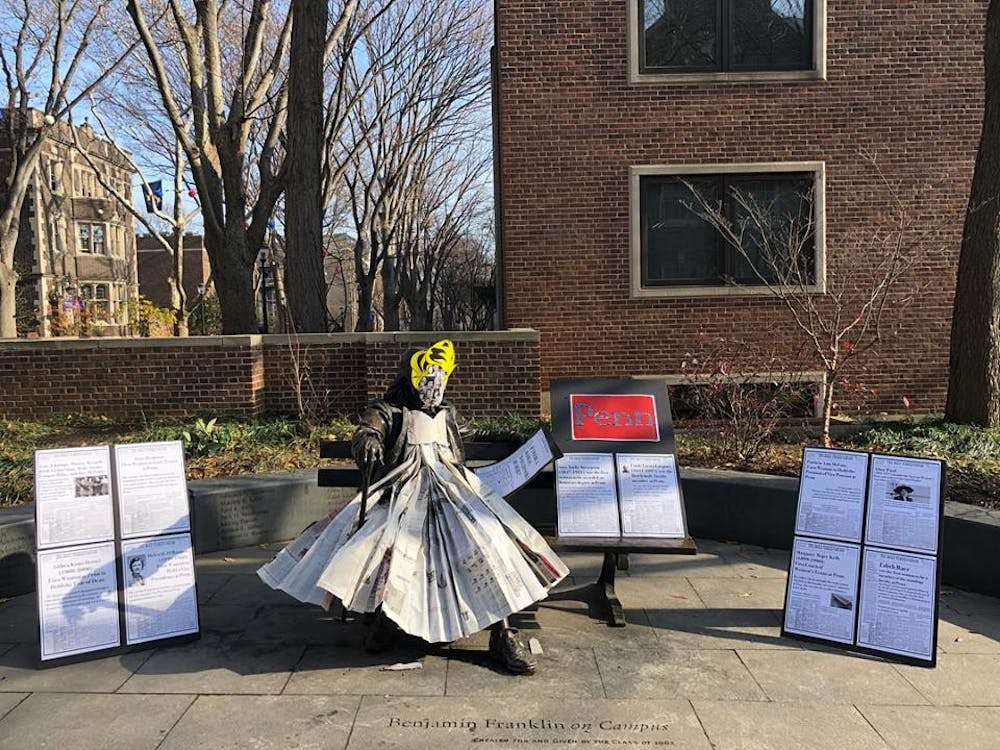In the book Ways of Seeing, John Berger writes, “Men act and women appear. Men look at women. Women watch themselves being looked at.” In monuments and in life, men see and women are seen—a testimony to a long history of the objectification.
How ironic it is that women, who have long been “seen,” have very few memorials in their honor. In the entire city of Philadelphia, there are only two statues dedicated to women: one for the French heroine Joan of Arc and the other for the Bostonian Quaker Mary Dyer. This is precisely the issue that the student art project Gendering Ben Franklin addresses: the absence of public art and monuments to women.
Created by Jason Barr (SAS ’19) and Street Arts Beat Linda Lin (SAS ’18), Gendering Ben Franklin is a public art piece that seeks to reimagine how Ben Franklin's gender might impact his remembrance. Lin and Barr made a custom newspaper dress to fit over the seated statue of Franklin at 37th St and Locust. They then covered his (her?) face with a kaleidoscopic collage of notable but unacknowledged women of history. Surrounding Franklin are posters of newspapers retitled as the “The Daily Femsylvanian.” Each has a headline that highlights the real–life achievements of women at Penn. One reads" “Sara Yorke Stevenson (1847-1921) was the first woman to be awarded an honorary degree at Penn.” Another: “Emily Lovira Gregory (1841-1897) was the first female faculty member at Penn.”
But perhaps the most striking headline is that on the newspaper Franklin himself holds: “If I Were a Woman, Would I Still Be Here?” That is, if Benjamin Franklin, a notorious womanizer and one of the most prominent figures in American history, were a woman, would he have been memorialized as he is? Barr doesn't think so. As he sees it, history has shown that “being a woman invalidates all the brilliance.”
The project drew its inspiration from Sharon Hayes’ sculpture If They Should Ask, which was on display as part of Monument Lab. For her project, Hayes inscribed the names of prominent Philadelphia women from colonial times up until the present onto nine pedestals that she collected from preexisting monuments. The goal was to draw attention to the “persistent and aggressive exclusion of women from this form of public recognition.”
Barr and Lin took on this project with a similar goal in mind. “I wanted to challenge a space that’s sacred, to challenge Ben Franklin,” Barr explains. His hope is that their project will inspire many others to do the same.

